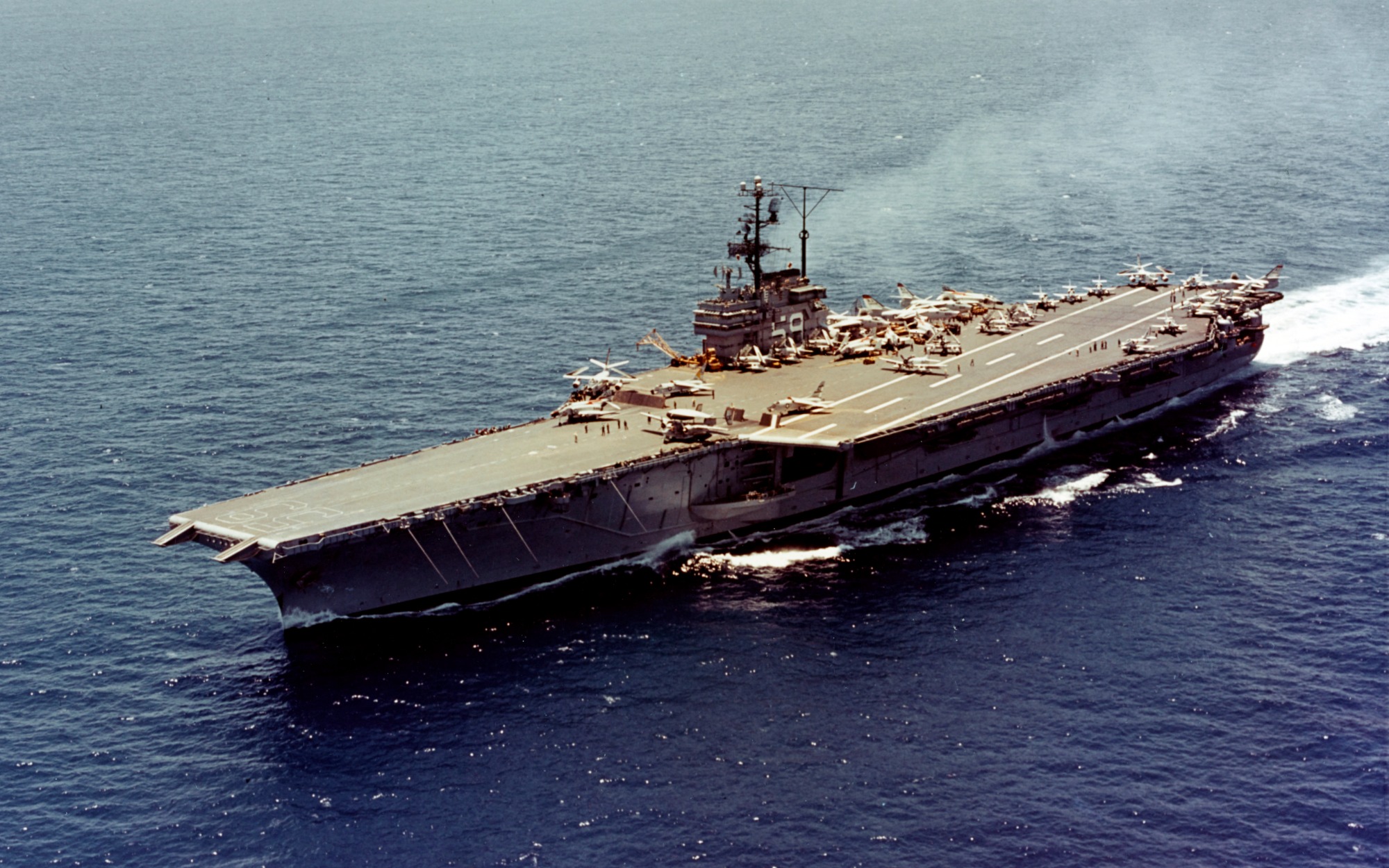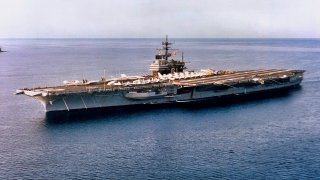Forrestal-Class: The U.S. Navy's Aircraft Carrier Powerhouse (Russia Hated It)
The USS Saratoga (CV-60), a Forrestal-class aircraft carrier, played a pivotal role in the U.S. Navy's Cold War strategy. Launched in 1956, it was designed to operate jet aircraft and featured an angled deck, allowing simultaneous launch and recovery operations.
Summary and Key Points: The USS Saratoga (CV-60), a Forrestal-class aircraft carrier, played a pivotal role in the U.S. Navy's Cold War strategy. Launched in 1956, it was designed to operate jet aircraft and featured an angled deck, allowing simultaneous launch and recovery operations.

-Notable for its service legacy, Saratoga hosted President Dwight D. Eisenhower in 1957 and participated in various Cold War missions, including the Vietnam War. Despite experiencing several mishaps, including a collision and a fire, the Saratoga remained a crucial asset until its decommissioning in 1994.
-The carrier was integral in advancing U.S. naval air power during its service.
USS Saratoga: The Cold War Aircraft Carrier That Defined U.S. Naval Power
As tensions between the Soviet Union and the U.S. began to ramp up in the early stages of the Cold War, the race to develop more modern navies began. Considered by many industry experts to be the most important component of a functioning navy, aircraft carriers took center stage in this effort.
These large ships can provide both defensive and offensive protection in war, in addition to power projection, versatility, and air support. To effectively counter the Soviets in the seas, the U.S. Navy adapted its first “super carriers” or large aircraft carriers in the 1950s.
What made the Forrestal-class stand out?
The Forrestal-class carriers were conceptualized following the Second World War. As the military began to recognize that nuclear weapons were shrinking in size and soon airframes would be able to carry them, the potential for air-power capabilities soared.
Around this time, the Air Force’s Douglas A4 Skyhawk was entering service. The U.S. understood that the ability to form a quick-response team equipped with tactical air prowess was mightily important. Since aircraft carriers provided these functions, work on the Forrestal-class ships began.
A critical part of the Forrestal-class’ design centered on size. Airframes had become significantly larger following the end of the Second World War, rendering the need for bigger carriers to carry them. Even when the Navy wasn’t in wartime, the service desired its new aircraft carriers to be able to sport the same number of airframes. Therefore, a larger aircraft carrier deck and more catapults were prioritized.
The Forrestal-class represented the world’s first-ever carrier created to operate jet aircraft. Another unique change that the Forrestal-class ships incorporated was the modern angled deck. Royal Navy Captain Dennis Campbell developed this design in the early 1950’s, which enabled carriers to conduct launch and recovery operations at the same time.
As explained by the U.S. Naval Institute, “The incorporation of an angled deck off to port into the Forrestal design obviated any envisioned need for a flush deck. The landing area was remote and directed away from the starboard side such that a structure there would present no safety issue. As built, the island’s centerline was nearly 95 feet to starboard from that of the ship and even farther from the angled deck. Additionally, the island solved the uptake issues by incorporating them into the structure and radar installations could be readily mounted without hindrance to air operations. A further benefit was that the antenna and radar placement high on the island gained greater electronic efficiency.”
Introducing the USS Saratoga
The USS Saratoga (CVB-60) was the second carrier in the Forrestal-class to be constructed.
Although first designated as a large aircraft carrier, she was later renamed as an attack aircraft carrier in 1952.
The USS Saratoga was commissioned four years later and achieved quite the service legacy.

Notably, then-President Dwight D. Eisenhower boarded the massive carrier in 1957, where he and members of his cabinet watched as the ship demonstrated anti-submarine warfare, air operations, guided missile operations, and other capabilities. In the same year, the carrier carried out Regulus guided missile tests as she was one of ten ships designed to operate the turbojet-powered subsonic guided missile.
In the USS Saratoga’s second decade with the Navy, she experienced a few mishaps. In 1960, the hefty carrier collided with the German freighter Bernd Leonhardt off the coast of North Carolina. Not even one year later, a fire erupted in the carrier’s number two machinery space, killing seven on board. Following an extensive shipyard stint to undergo repairs and maintenance, the USS Saratoga was deployed to the Mediterranean. Notably, the carrier was used during the 1967 Arab-Israeli War to treat those wounded in the attack on the USS Liberty.
During the 1970’s, the USS Saratoga was deployed to the western Pacific for the first time. Details surrounding her participation in the Vietnam War were documented by Navy Site: “During the first period, SARATOGA lost four aircraft and three pilots. On the plus side, on 21 June 1972, two of her F-4 Phantoms from VF-31 attacked three MiG 21s over North Vietnam. Dodging four surface to air missiles, one of the F-4s, piloted by Cmdr. Samuel C. Flynn Jr., with radar intercept officer Lt. William H. John, shot down one of the MiG aircraft. This Phantom, Bureau number 157307, was later transferred to the Smithsonian's National Air and Space Museum. The aircraft was transferred upon its arrival at Dulles International Airport on 29 November 1988.”
USS Saratoga would eventually be decommissioned in 1994.
About the Author
Maya Carlin, a Senior Editor for 19FortyFive, is an analyst with the Center for Security Policy and a former Anna Sobol Levy Fellow at IDC Herzliya in Israel. She has by-lines in many publications, including The National Interest, Jerusalem Post, and Times of Israel. You can follow her on Twitter: @MayaCarlin.
All images are Creative Commons of Forrestal Aircraft Carriers.


